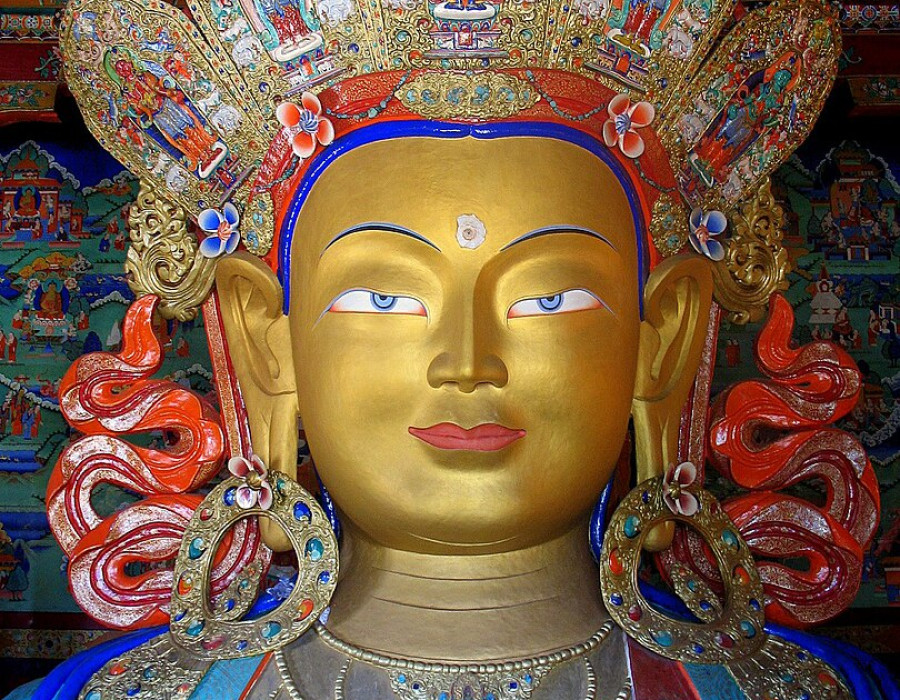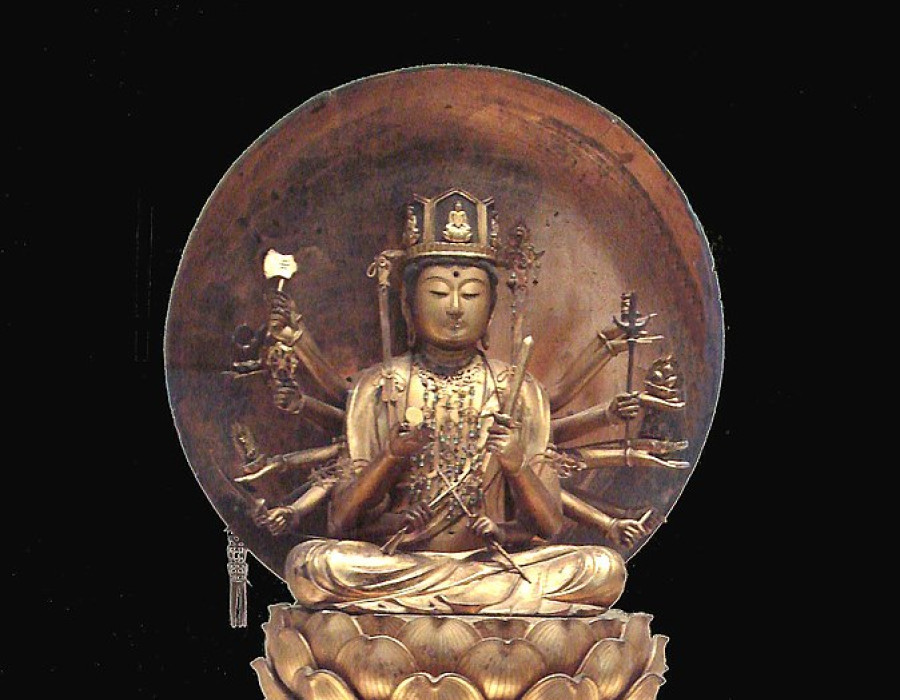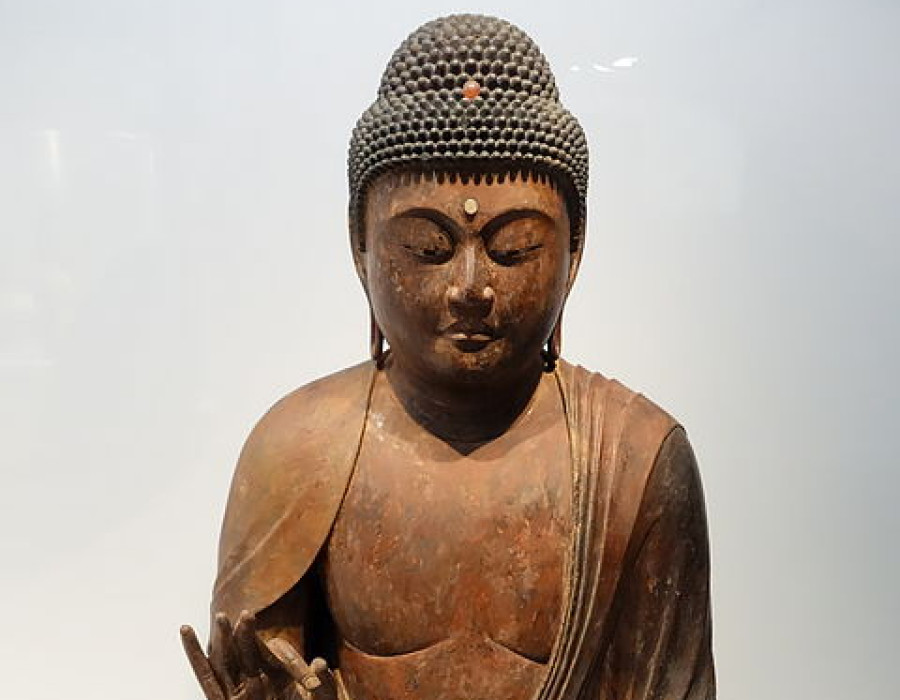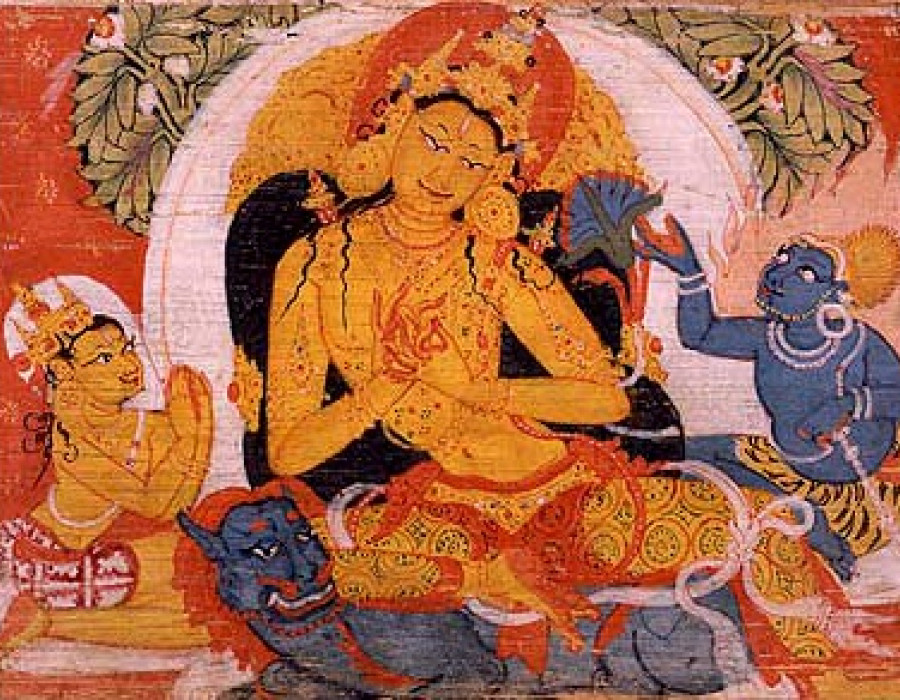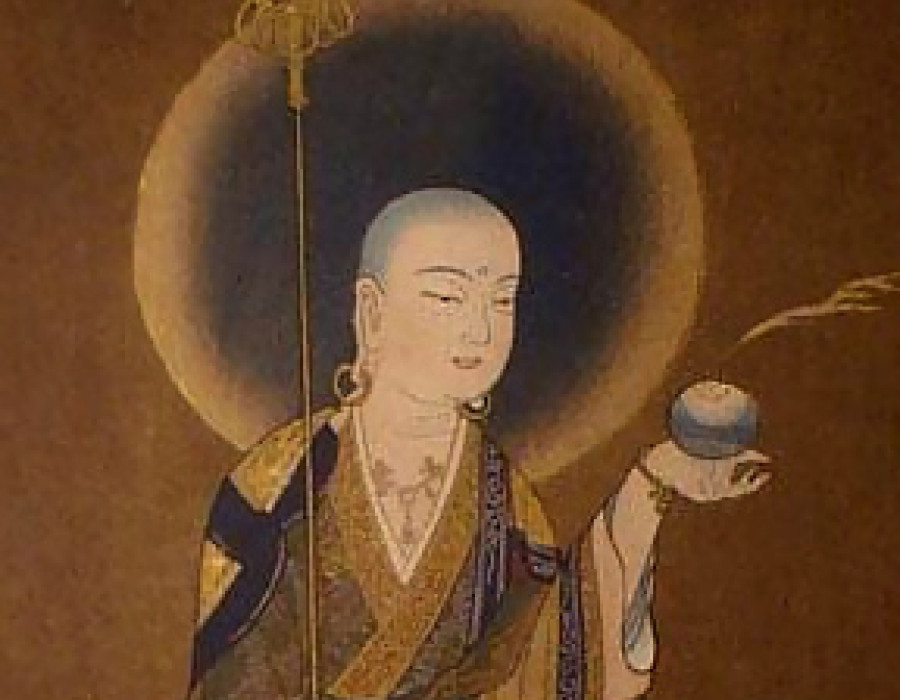
Martin Goodson
Bodhisattva Vajrapani
Vajrapani, whose name means ‘He who holds the vajra’ ( a symbolic thunderbolt), is one of the Dharmapalas or Dharma guardians - protectors of those who preach and practice the Buddha’s teachings.

Bodhisattva Vajrapani. Late 1100s - early 1200s. Tibet.
He is seen as complimentary to Avalokitesvara and Manjushri. While the two latter are functions of the Buddha’s compassion and wisdom, Vajrapani is seen as the Buddha’s power.

Image of Vajrapani in cave 1 Aurangabad in Eastern India
According to some legends he accompanied the Buddha during his life, witnessing his birth in the Lumbini gardens and facilitating Prince Gautama’s flight from the palace.
Originally, it seems likely that he was a deva responsible for the rains imported from Indian religion. This supposition derives from the way he is depicted in statues at Gandhara.

Vajrapani statue in American Museum of Natural History, New York... By Terren - originally posted to Flickr as Wrathful Deities, CC BY 2.0
He is depicted in a wrathful form, often with multiple heads and limbs and is one of the earliest Bodhisattvas appearing in the Pali Canon. He is known and revered in Theravadin Buddhism as well as more generally in several different forms throughout Mahayana Buddhism in SE Asia.
There are suggestions that he may have incorporated elements of Zeus (the thunderbolt), via the Greek influence in Gandhara and he has also been depicted as a muscular hairy man, possibly a depiction of the Greek hero Heracles. Buddhaghosa, the 5th century Theravadin philosopher and translator, identified him with Indra, the Hindu equivalent to Zeus. In Buddhist mythology Vajrapani is identified as a yaksha - a class of elemental devas, which may refer to his rain-making qualities.
Such elemental beings certainly allow for a more violent disposition. It is a classic move that when such a being is converted to Buddhism, they do not lose their nature; instead they are put to use in service to the Dharma. This indicates that what is commonly thought of as ‘evil’ is in fact merely misplaced, or ‘out of harmony’ with the Dharma. A problem that is rectified when the being attains the wisdom to serve the Dharma

Two grandmasters of the Shaolin Temple Shi DeRu (Shawn Xiangyang Liu) and Shi DeYang (Shi WanFeng) ... By Shi Deru (a.k.a. Shawn Xiangyang Liu)
Perhaps unsurprisingly, Vajrapani is the patron bodhisattva of Shaolin monastery. According to one foundational story, the monk Sengchou gained powers and fighting skill by praying to Vajrapani. It is interesting to note that the Shaolin monks consider Vajrapani to be an emanation of Bodhisattva Mahasattva Avalokitesvara in her Chinese form Guanyin, showing that such fighting prowess is devoted to the principle of compassion.
Vajrapani is often depicted whenever the Buddha was confronted by heretics or those who might seek to do him harm. In this way he was directly responsible for protecting the Buddha and his mission. It is thereby considered that anyone who makes the Four Great Bodhisattva Vows can call on him for protection.
His mantra is: oṃ vajrapāṇi hūṃ phaṭ



